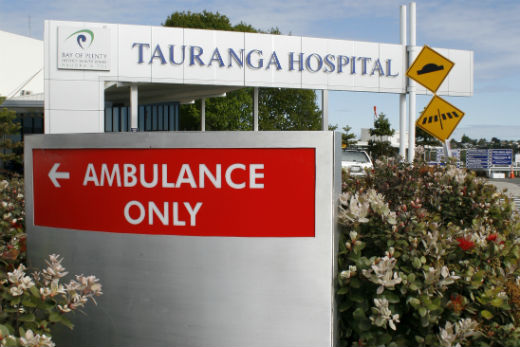Falls resulting in fractured hips and brain bleeds along with a death from misdiagnosis are just some of Bay of Plenty District Health Board's medical mishaps in the last year.
The Health Quality & Safety Commission today released its annual report showing a four per cent increase in serious adverse events, with 454 SAEs reported, up from 437 in 2012–13.
Tauranga Hospital. Photo: File.
This figure is also 150 per cent up on the number first reported in 2007, when 182 SAEs were reported.
In the Bay of Plenty just nine SAEs per 100,000 bed days were reported - the lowest number recorded in New Zealand's 20 district health boards. It is also a 25 per cent decrease from the 12 in 2012-13.
Of the Bay's nine cases, eight relate to falls resulting in fractured hips, shoulders and brain bleeds.
The one non-fall case saw a patient die of sepsis as the result of a delay in recognising a small bowel perforation and, in turn, not receiving optimum care.
The DHB puts this down to communication, reliance on bladder ultrasound and failure to fully consider other possibilities for the patient's condition (peritonitis).
Bay of Plenty District Health Board chief executive Phil Cammish says this report is about learning when things go wrong during the provision of healthcare, and preventing similar incidents happening.
Phil says a continued area of emphasis is being placed on falls and it already has established a falls prevention programme which was continually monitored and reviewed.
Health Quality & Safety Commission chair Professor Alan Merry says it is encouraging to see the work and resources the health sector has put into getting better at reporting incidents of patient harm.
Alan says: 'Patients who are harmed during health care have a right to understand what happened and to expect that everything possible will be done to prevent the same thing from happening to someone else in the future.”
He says the slight increase in SAEs is likely to reflect the health sector's increasing commitment to improved reporting of cases.
'We expected the number of SAEs to increase as health providers improved their reporting systems, and that seems to be happening.
'It is also pleasing to see a growing range of providers reporting their serious adverse events, including private surgical hospitals, aged residential care facilities, disability services the National Screening Unit and hospices.”



0 comments
Leave a Comment
You must be logged in to make a comment.